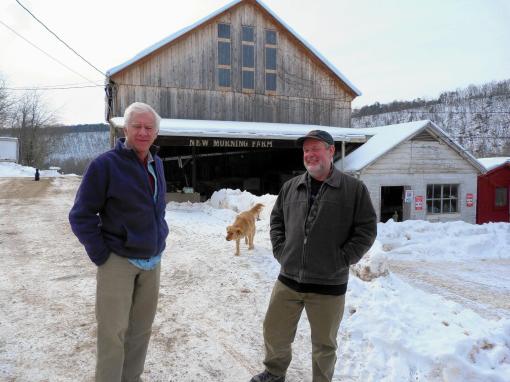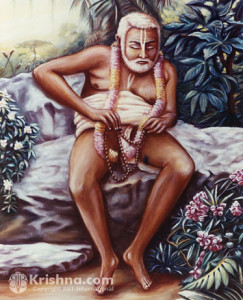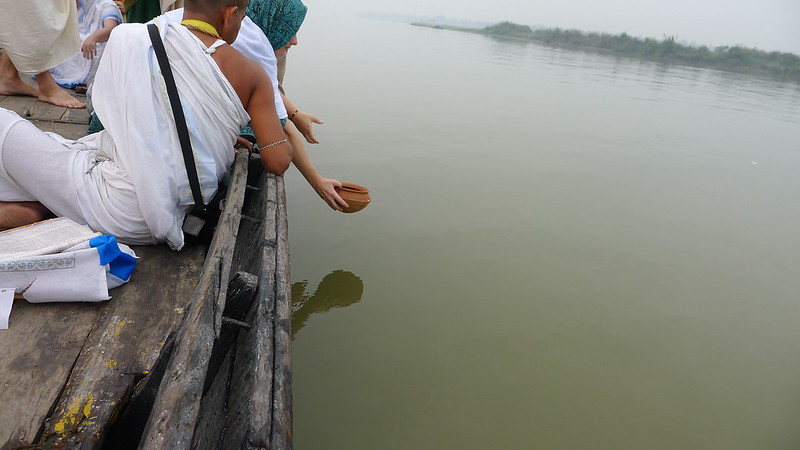HUSTONTOWN, Pa. — Jim Crawford was rushing to load crates of freshly picked organic tomatoes onto trucks heading for an urban farmers market when he noticed the federal agent.
A tense conversation followed as the visitor to his farm — an inspector from the Food and Drug Administration — warned him that some organic-growing techniques he had honed over four decades could soon be outlawed.
“This is my badge. These are the fines. This is what is hanging over your head, and we want you to know that,” Crawford says the official told him.
Crawford’s popular farm may seem a curious place for the FDA to move ahead with a long-planned federal assault on deadly food poisoning. To Crawford’s knowledge, none of the kohlrabi, fennel, sugar snap peas or other crops from his New Morning Farm have ever sickened anyone. But he is not the only organic grower to suddenly discover federal inspectors on his land.
In 2010, after a years-long campaign, food-safety activists persuaded Congress to give the FDA authority to regulate farm practices. The next year, an outbreak of food poisoning that killed 33 people who ate tainted cantaloupes put pressure on the FDA to be aggressive.
Now, farmers are discovering that the FDA’s proposed rules would curtail many techniques that are common among organic growers, including spreading house-made fertilizers, tilling cropland with grazing animals, and irrigating from open creeks.
Suddenly, from small family operations nestled in the foothills of Appalachia to the sophisticated organic-grower networks that serve Los Angeles and San Francisco, the farms that celebrity chefs and food-conscious consumers jostle to buy from are facing an unexpected adversary.
They’re fighting back. Even though full enforcement of the rules is still years away, they are warning customers that some farms would have to close.
“They are going to drive farms out of business,” said Dave Runsten, policy director for Community Alliance with Family Farmers in Davis, Calif.
“The consumer groups behind this don’t understand farming,” Runsten says. “They talk out of both sides of their mouth. They demand these one-size-fits-all regulations, then say, ‘I don’t want to hurt those cute little farmers at the farmers market. I shop at the farmers market.’ It is frustrating.”
Many farmers who take part in the locally grown food movement argue that contamination is a problem of industrial-sized farms and that some of the practices the FDA might ban actually make consumers safer.
Food safety advocates have urged regulators to hang tough. “We don’t believe large facilities are the only place where outbreaks are happening,” said Caroline Smith DeWaal, food safety director at the Center for Science in the Public Interest in Washington. Farm-to-fork growers, she said, need to accept that emerging strains of E. coli and other bacteria can just as easily seep into the produce sold at a farmers market as into the batches of salad bagged at giant processing plants, and they need to tweak their methods to protect against it.
 Devotees from the ISKCON New Govardhana farm perform the congregational chanting of the Holy Names to spread transcendental awareness amongst the residents and tourists of the Byron Bay which is a beachside town located in the far-northeastern corner of the state of New South Wales, Australia. Read more ›
Devotees from the ISKCON New Govardhana farm perform the congregational chanting of the Holy Names to spread transcendental awareness amongst the residents and tourists of the Byron Bay which is a beachside town located in the far-northeastern corner of the state of New South Wales, Australia. Read more ›  Devotees from the ISKCON New Govardhana farm perform the congregational chanting of the Holy Names to spread transcendental awareness amongst the residents and tourists of the Byron Bay which is a beachside town located in the far-northeastern corner of the state of New South Wales, Australia. Read more ›
Devotees from the ISKCON New Govardhana farm perform the congregational chanting of the Holy Names to spread transcendental awareness amongst the residents and tourists of the Byron Bay which is a beachside town located in the far-northeastern corner of the state of New South Wales, Australia. Read more ›  In the Pancaratra scriptures there is a saying that in the ultimate analysis devotion is the only element which might cause the Lord to appear. That’s how the small Panca-tattva came, due to the great desire and devotion of His devotees. Then, as long as the devotee wishes to serve Him, the Lord reciprocates in the same way.
Regarding the big Panca-tattva Deities, a whole book has been written on how They were manifested, first in South India, and then installed in Sri Mayapur dhama.
In the Pancaratra scriptures there is a saying that in the ultimate analysis devotion is the only element which might cause the Lord to appear. That’s how the small Panca-tattva came, due to the great desire and devotion of His devotees. Then, as long as the devotee wishes to serve Him, the Lord reciprocates in the same way.
Regarding the big Panca-tattva Deities, a whole book has been written on how They were manifested, first in South India, and then installed in Sri Mayapur dhama.  On 3rd March, 2014, the worldwide vaisanva community gathered at Mayapur to celebrate the 10th Anniversary of Sri Panca Tattva Installation in Mayapur. Around 6000 devotees were already in Mayapur, taking part in the kirtan mela. Thousands more devotees arrived yesterday and today from all over the world. A Maha Abhiseka was performed to Sri Panca Tattva. This is the mercy of Their Lordship Sri Panca-Tattva, who have manifested at Mayapur in Their magnificent 7ft deity form. Once again, They are gathering devotees together so they can relish the pastimes of the Lord in the association of His dear devotees.
On 3rd March, 2014, the worldwide vaisanva community gathered at Mayapur to celebrate the 10th Anniversary of Sri Panca Tattva Installation in Mayapur. Around 6000 devotees were already in Mayapur, taking part in the kirtan mela. Thousands more devotees arrived yesterday and today from all over the world. A Maha Abhiseka was performed to Sri Panca Tattva. This is the mercy of Their Lordship Sri Panca-Tattva, who have manifested at Mayapur in Their magnificent 7ft deity form. Once again, They are gathering devotees together so they can relish the pastimes of the Lord in the association of His dear devotees. 




 2014-03-02 B. Mario's - Madhukanta's-tirobhava ceremony on the Ganges by Sivarama Swami and Bir Krishna Swami
2014-03-02 B. Mario's - Madhukanta's-tirobhava ceremony on the Ganges by Sivarama Swami and Bir Krishna Swami  "I offer my respectful obeisances unto Sri Jagannatha dasa Babaji Maharaja, who is respected by the entire Vaisnava community and who discovered the place where Lord Caitanya appeared."
Sri Jagannatha Dasa Babaji Maharaja was born was born around the year 1800 AD.
in the Mayamansingh district of West Bengal. Not much is known about his ealry life. Gaudiya Vedanta-acharya Sri Baladeva Vidyabhushana had a disciple named Uddhava das. His disciple was Sri Madhusudana Dasa Babaji who lived in Suryakunda and it was from Madhusudana Dasa Babaji that Jagannatha Dasa Babaji Maharaja took initiation.
Jagannatha Dasa Babaji lived in Vrindavan and performed his bhajan there for quite some time. He became famous among the devotees there as one who was perfect in Krishna-bhakti.
"I offer my respectful obeisances unto Sri Jagannatha dasa Babaji Maharaja, who is respected by the entire Vaisnava community and who discovered the place where Lord Caitanya appeared."
Sri Jagannatha Dasa Babaji Maharaja was born was born around the year 1800 AD.
in the Mayamansingh district of West Bengal. Not much is known about his ealry life. Gaudiya Vedanta-acharya Sri Baladeva Vidyabhushana had a disciple named Uddhava das. His disciple was Sri Madhusudana Dasa Babaji who lived in Suryakunda and it was from Madhusudana Dasa Babaji that Jagannatha Dasa Babaji Maharaja took initiation.
Jagannatha Dasa Babaji lived in Vrindavan and performed his bhajan there for quite some time. He became famous among the devotees there as one who was perfect in Krishna-bhakti.  This is Radha Krishna Temple in Chipiwada (chandani chowk) where Srila Prabhupada used to stay before going to USA while he was staying in Vrindavan and writing the 1st canto of Srimad Bhagvatam, so he use to come to delhi to print and as well distribute them also. Srila Prabhupada use to worship the deities here, writing books in night time and day time go to press or to distribute the books or Back to Godhead magazine.
This is Radha Krishna Temple in Chipiwada (chandani chowk) where Srila Prabhupada used to stay before going to USA while he was staying in Vrindavan and writing the 1st canto of Srimad Bhagvatam, so he use to come to delhi to print and as well distribute them also. Srila Prabhupada use to worship the deities here, writing books in night time and day time go to press or to distribute the books or Back to Godhead magazine.